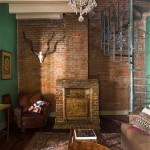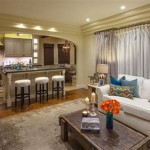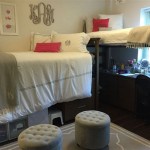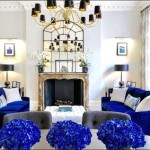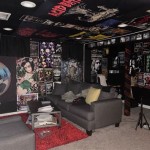How To Decorate Irregular Shaped Rooms
Irregularly shaped rooms, while presenting unique design challenges, offer an opportunity to create dynamic and visually interesting spaces. Careful planning and strategic placement of furniture and décor can transform awkward angles and unusual dimensions into charming and functional areas.
One of the first steps in decorating an irregularly shaped room is to define its purpose. Whether it's a living room, bedroom, or home office, understanding the room's function will guide furniture placement and design choices. For instance, a living room will likely require a seating area, while a bedroom will necessitate space for a bed and storage.
Creating zones within the room can help manage irregular shapes. Rugs can delineate specific areas, such as a conversation area or a dining space. Different lighting fixtures can also contribute to zoning, highlighting specific functions and adding visual interest. For example, a pendant light above a dining table visually separates it from a nearby seating area illuminated by floor lamps.
Furniture placement is crucial in irregular rooms. Avoid overcrowding the space. Instead, select pieces that fit the room's proportions and complement its unique shape. Built-in furniture can be particularly useful in maximizing space and addressing awkward angles or alcoves. Consider incorporating custom shelving units or window seats to utilize these often-underused areas.
Embrace the room's quirks. An alcove can become a cozy reading nook with a comfortable armchair and good lighting. A slanted ceiling can be accentuated with contrasting paint colors or interesting wallpaper. Instead of trying to hide unusual features, highlight them to become focal points.
Lighting plays a significant role in enhancing the ambiance and functionality of any room, especially one with an irregular shape. Natural light should be maximized. Keep window treatments minimal to allow as much light as possible to enter. Strategically placed mirrors can also help reflect light and create an illusion of spaciousness. Supplement natural light with layered artificial lighting, including ambient, task, and accent lighting.
Color choices can significantly impact the perception of an irregularly shaped room. Light, neutral colors on walls and ceilings can create a sense of openness and airiness, making the room feel larger. Bold colors can be used strategically on accent walls or furniture to draw attention to specific areas or features.
When choosing window treatments for irregularly shaped windows, consider the shape and size of the window. For oddly shaped windows, custom-made curtains or blinds might be the best option to ensure a proper fit. Roman shades or roller blinds can be a practical choice for smaller windows or those situated in awkward positions. For larger windows or those that offer a scenic view, sheer curtains can provide privacy while still allowing natural light to filter through.
Accessories and décor should be chosen thoughtfully to complement the room's overall design and enhance its unique features. Avoid cluttering the space with too many small items. Instead, opt for a few larger, statement pieces that add visual interest without overwhelming the room. Large-scale artwork or sculptures can be particularly effective in anchoring the space and drawing the eye.
Consider the flow of traffic within the room. Furniture should be arranged in a way that allows for easy movement and accessibility. Avoid placing large pieces of furniture in areas that will obstruct pathways or create bottlenecks. Ensure that there is ample space to navigate comfortably around the room.
Utilizing vertical space can be particularly effective in rooms with unusual ceiling heights or slopes. Tall bookshelves or vertical storage units can draw the eye upward and create a sense of height. Hanging artwork or decorative elements at varying heights can also add visual interest and dimension to the space.
Employing visual tricks can help to minimize the awkwardness of irregular shapes. Strategically placed mirrors can create the illusion of a larger, more symmetrical space. Using a consistent color palette throughout the room can also help to unify the space and minimize the impact of unusual angles or alcoves.
Don’t be afraid to experiment with different layouts and design ideas. Take your time to consider the room’s unique features and how you can best utilize them to create a functional and aesthetically pleasing space. Consider creating a floor plan or using online room design tools to visualize different furniture arrangements and décor options.

How To Arrange Furniture In An Odd Shaped Room Curio Design Studio

21 Tips For Styling An Odd Shaped Bedroom

21 Tips For Styling An Odd Shaped Bedroom

How To Decorate An Oddly Shaped Room And Love It Home Garden

How To Arrange Furniture In An Odd Shaped Room Curio Design Studio

Making An Awkward Shaped Living Room Work

How To Decorate An Oddly Shaped Room And Love It Home Garden

Interior Design For Awkwardly Shaped Spaces Ellecor

Void Of Color Mitigates Bedroom S Odd Shape Interior Design Ideas

How To Decorate An Oddly Shaped Room And Love It Home Garden
